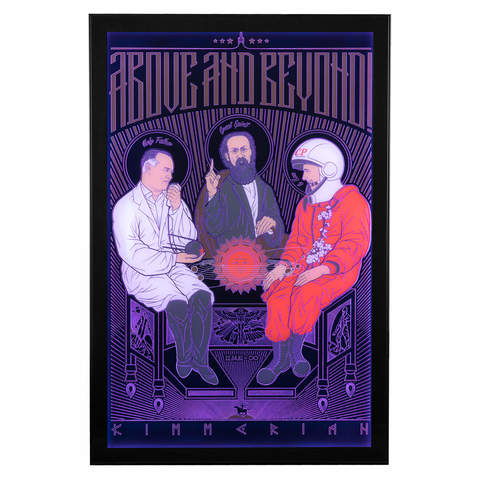Космическая Троица
1885 год: всего двадцать четыре года прошло с отмены крепостного права, Россия и Англия делят Афганистан, французы отбивают Вьетнам у китайцев в Тонкинском заливе, Даймлер и Майбах в Германии изобретают первый мотоцикл, а отпрыск польского рода Константин Эдуардович Циолковский, преподавая в Боровском уездом училище, уже задумывается о создании «металлического управляемого аэростата» и «ракетных поездов».

Фото 1. К.Э. Циолковский и модель его аэростата
Разработка теории реактивного движения, конструкции аэроплана, выведение формул расчета предельных скоростей полета и ускорений ракет с переменной массой и прочие работы подготовили теоретическую базу для начала штурма космоса, а личная встреча с Королевым в 1931 дала начало постройке первых советских жидкостно-баллистических ракет.
В данном контексте необходимо упомянуть выдающегося русского ученого Ивана Мещерского - основоположника теории механики переменной массы, работы которого послужили основой для современной ракетодинамики, создателя советских жидкостных ракетных двигателей Валентина Глушко (был в переписке с Циолковским - 1923-1930), а также пионеров ракетостроения Германа Оберта и Вернера фон Брауна (Германия), Роберт Эснаулт-Пелтери (Франция), Роберта Годдарта (США), которые шли сходным путем.
4 октября 1957 года все радиолюбители планеты услышали сигнал с первого искусственного спутника земли «ПС-1». Запись, сделанная в Вашингтоне
http://mentallandscape.com/Sputnik1_WashingtonDC.mp3
Спутник нес в себе счетчик Гейгера и датчик метеорных частиц, что позволило открыть радиационные пояса.

Фото 2. Первый искусственный спутник Земли ПС-1
И вот 12 апреля 1961 года, советский космонавт Юрий Гагарин в корабле «Восток-1» совершил один оборот вокруг Земли и стал первым человеком в космосе! Просто представьте, как это было — отправиться в неизведанное на технологиях 1950-х годов, на полностью аналоговых приборах — по траектории, рассчитанной с помощью логарифмической линейки!

Фото 3. Взлет ракето-носителя "Восток" с космическим кораблем "Восток - 1"
Хотя Россия продолжает находиться в первой тройке по запускам, пальма первенства в освоении космоса перешла к США. Мы постоянно слышим о подготовке к полету на Марс, смотрим съемки с марсианской поверхности, фотографии дальних галактик, а Voyanger 1 вовсе покинул Солнечную систему. Все это вызывает массу вопросов: если у нас уже есть баллистическая ракета «Буревестник» и орбитальный буксир «Зевс» с ядерным двигателем, почему корабль с такой же силовой установкой еще не готовится на Марс? Ведь к 2025 туда спешат американцы! Не будет ли новых переносов сроков запуска корабля «Орел»? Почему стоимость запуска у Space-X ниже и так далее.
 En
En Ru
Ru


